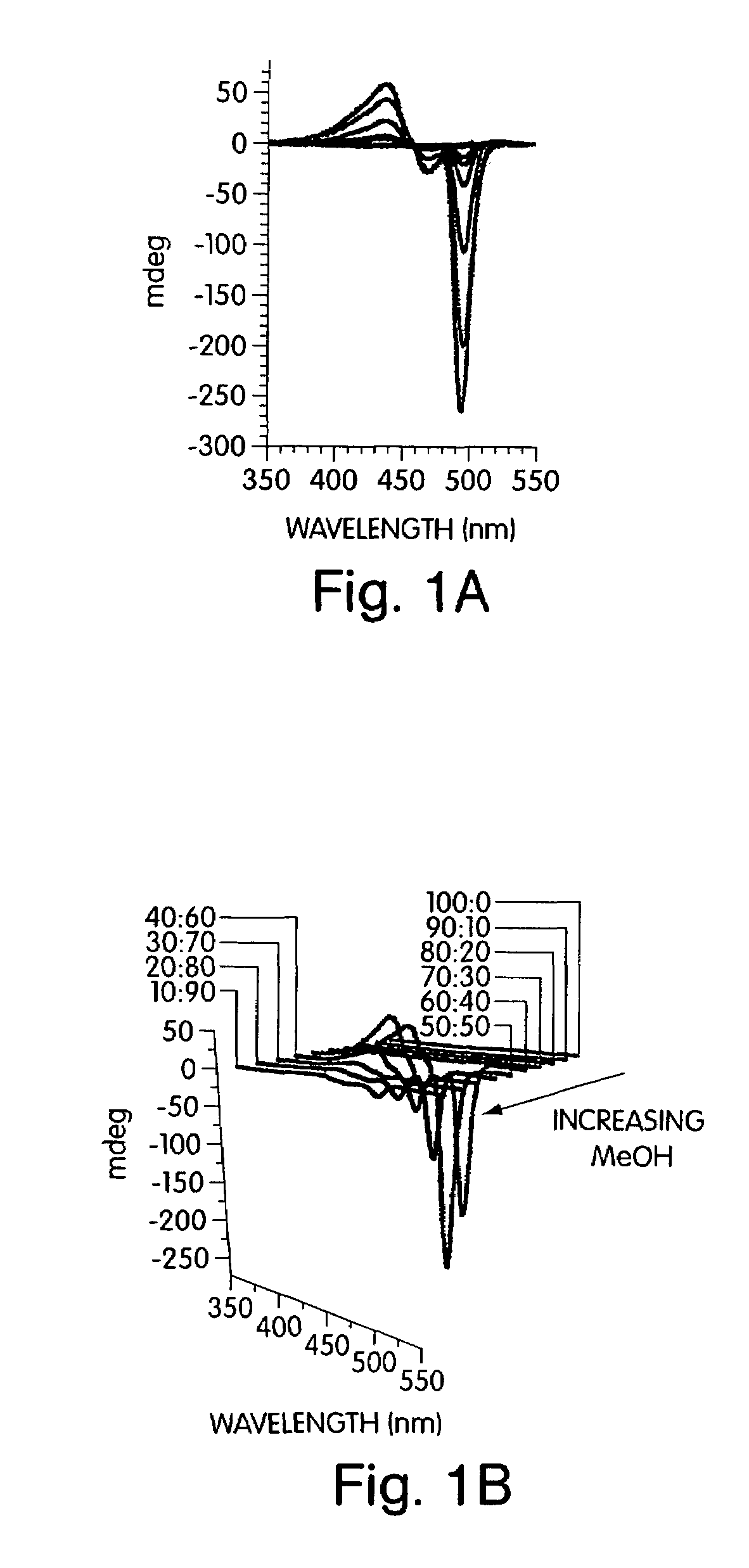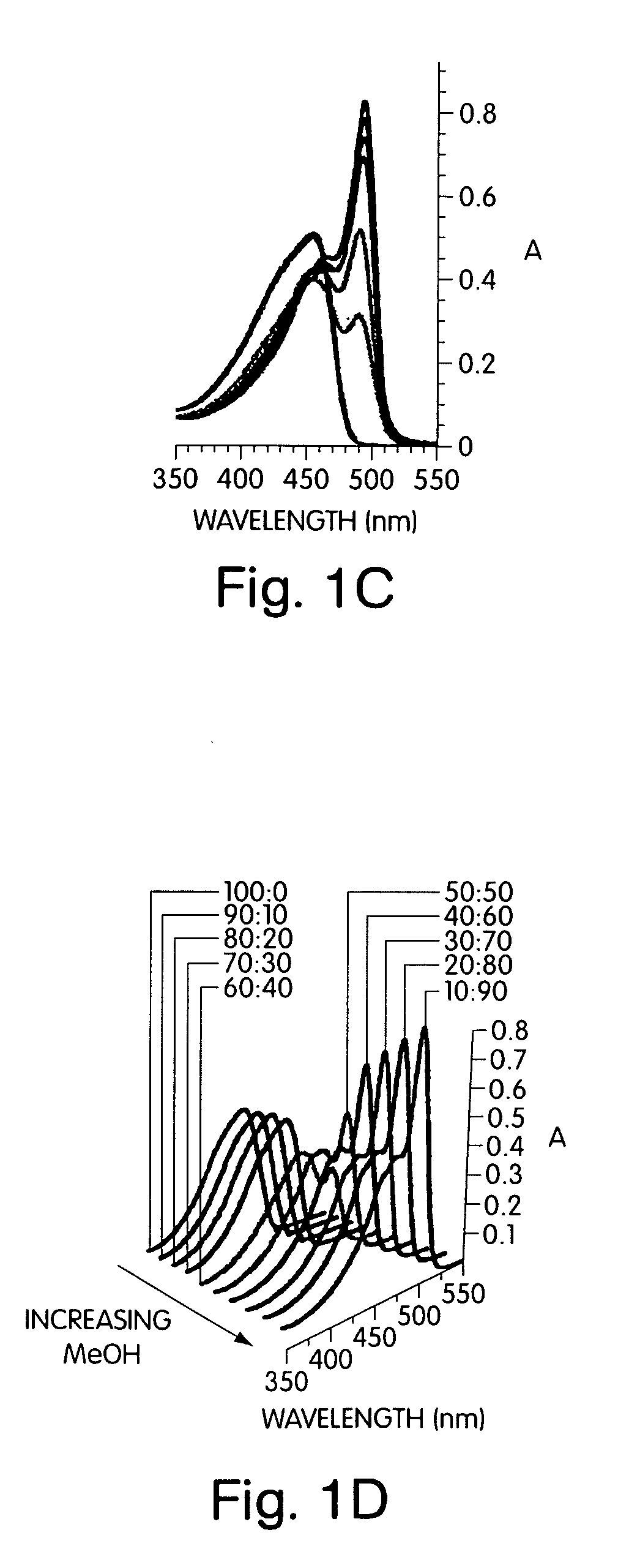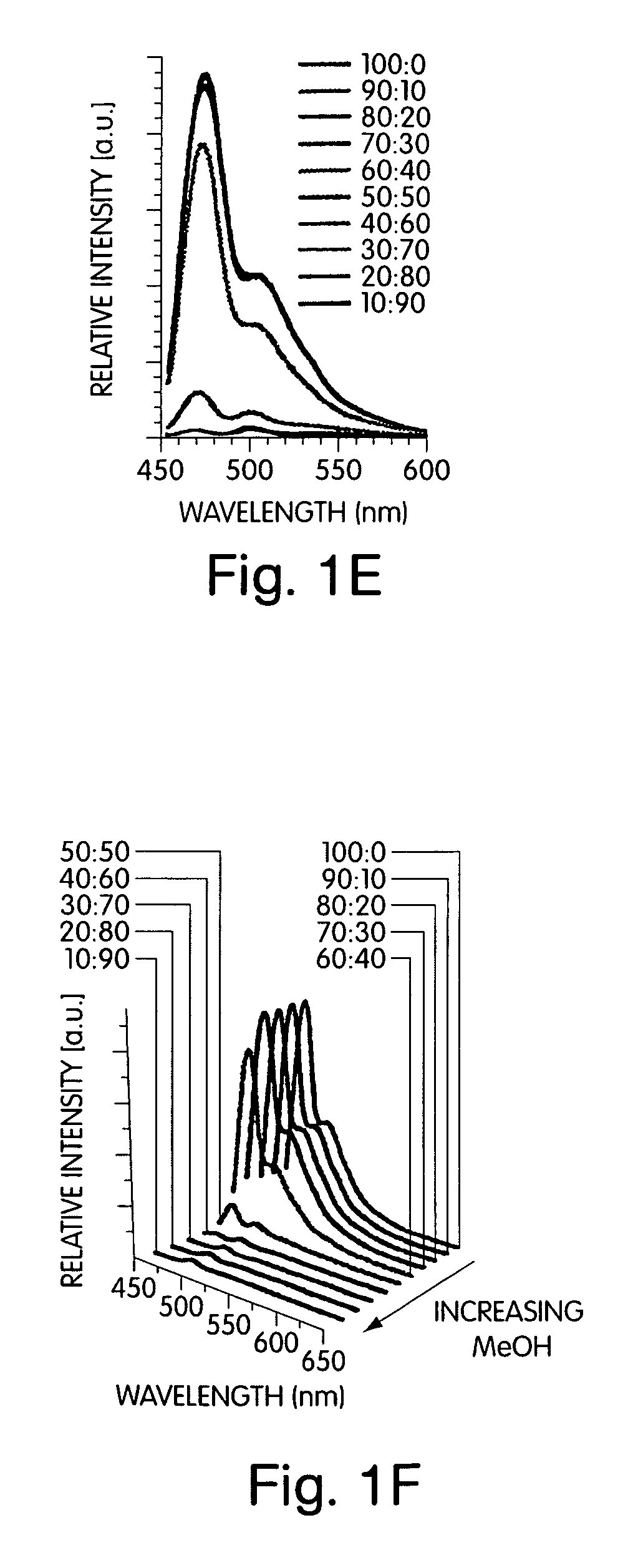Emissive, high charge transport polymers
a high-charge transport and polymer technology, applied in the field of emissive polymer aggregates, can solve the problems of reducing the response time, lowering the light output of luminescent devices, and reducing the diffusion length of excitons
- Summary
- Abstract
- Description
- Claims
- Application Information
AI Technical Summary
Benefits of technology
Problems solved by technology
Method used
Image
Examples
example 1
[0084]This example illustrates the electronic spectra of para(phenyl-ethynylene)s deduced through studying ordering and phase transitions in Langmuir films that allowed for a deconvolution of the effects of backbone planarization (conjugation length) and interpolymer interactions (aggregation). Structures such as polymer 1 in FIG. 7 were initially investigated to determine their ability to promote aggregation. Structure 1, in this example, contains chiral alkyloxy groups. Other polymers such as poly(2,5-bis[2-(S)-methylbutoxy]-1,4-phenylene ethynylene) have also been previously investigated.
[0085]The addition of non-solvents to a solution of the conjugated polymer generated a stable solution of very small, non-scattering particles that allowed quantitative studies of the optical properties by avoiding the scattering, reflection, and waveguide of the emitted light that can complicate thin film studies. To develop a comprehensive understanding of polymers containing chiral alkyloxy si...
example 2
[0091]This example illustrates specific architectures that prevent aggregate chains from achieving a collinear structure, allowing a strongly aggregated chiral and emissive organization of polymers to be stabilized. Polymers 2 in FIG. 7 containing the pentiptycene group have previously been shown to be excellent in preventing chain aggregation in spin-cast films. However, the addition of methanol (30%) to solutions containing polymers 2 gave aggregates with significantly quenched emission (Φ=0.21). This aggregate is much slower to assemble than polymer 1. The slower assembly may be due to polymer chains assembling into an interlocking structure where the polymer chains are constrained in the clefts between pentiptycene groups.
[0092]An interlocking structure, as exhibited by polymer 2, may therefore stabilize chiral aggregates by preventing a coincidence of strongly interacting polymer chains. Studies of chiral analog polymer 3, as described in this example and shown in FIG. 7, confi...
example 3
[0095]This example illustrates the advantages of a 3-dimensional structure for the design of opto-electric devices. The performance of polymer 3 as a self-amplifying sensory polymer was investigated under solution and solid state conditions by means of Stern-Volmer quenching experiments (FIG. 4, including non-aggregated (II) and aggregated forms (I), in solutions at (a) Optical Density (OD)=0.09 and (b) in films of OD=0.03). In solution, fully aggregated structures of 3 displayed a 15-fold steeper quenching slope toward explosives dinitrotoluene (DNT) and trinitrotoluene (TNT) than non-aggregated forms of polymer 3. In solid-state experiments, polymer 3 was compared to polymer 2, a material with a self-amplified sensory due to efficient transport that may enable sensors to be constructed with femtogram detection capabilities. Polymer 2 exhibited its best performance when spin-coated from non-aggregated solutions, giving films of non-interacting chains. Films of polymer 2 were compar...
PUM
| Property | Measurement | Unit |
|---|---|---|
| Temperature | aaaaa | aaaaa |
| Fraction | aaaaa | aaaaa |
| Fraction | aaaaa | aaaaa |
Abstract
Description
Claims
Application Information
 Login to View More
Login to View More - R&D
- Intellectual Property
- Life Sciences
- Materials
- Tech Scout
- Unparalleled Data Quality
- Higher Quality Content
- 60% Fewer Hallucinations
Browse by: Latest US Patents, China's latest patents, Technical Efficacy Thesaurus, Application Domain, Technology Topic, Popular Technical Reports.
© 2025 PatSnap. All rights reserved.Legal|Privacy policy|Modern Slavery Act Transparency Statement|Sitemap|About US| Contact US: help@patsnap.com



